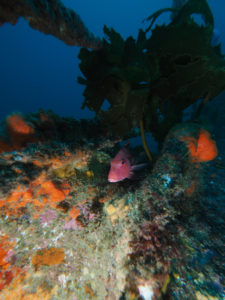Most underwater photographers begin with an underwater-capable compact camera. And while a professional set-up is enviable, there’s no reason you can’t begin to master underwater photography with a compact camera, like the SeaLife Micro 2.0. While photography on land poses unique challenges, those issues multiply underwater: tripods no longer allow for slow shutter speeds and colors fade with distance. Particles often fill the lens and aperture changes turn day to night.
Using a compact camera
Most cameras inside a housing can take a great underwater photo that makes it big online or in print. By following a few key pieces of advice, great photos are within your grasp, and the right compact camera and setup will help you get there. Here are our top five tips when it comes to shooting underwater photography with a compact camera like a pro.
Find a suitable underwater housing for your camera
Not all cameras feature an available underwater housing. Also, not all housings will give you the same options to expand your photographic range. Things to consider include: does the housing give me access to all the camera’s functions? Is a cold-shoe mount present on the case to allow me to use a focus or video light? What is the housing made of, and will it hold up to the rigors of shore diving? Or will it just be useful for boat dives? Can I add wet lenses to shoot macro subjects or red filters that produce great whale-shark pictures? Ask about and research all these things once you find the available underwater housings for your camera.
Choose the right compact camera
Compact cameras differ enormously these days. The information and specifications for each can be daunting, even for a semi-professional photographer. Look for a few simple features to help you wade through the information easily. A camera with manual mode settings, indicated by an M on the mode selection, allows you endless future options once you’re more experienced. Easy access to the white-balance settings will allow you flexibility on a dive instead of holding up your buddies while you press buttons. Find out if there’s an underwater mode. This is often an indication that the manufacturer considers this model suitable for underwater photography.

Consider the importance of strobes
Strobes add a huge diversity to your photographic capabilities. The old adage about underwater photography is spend twice as much on your strobes as you do on your camera. Before you purchase strobes, think about what sort of photos you usually take. Do you take wide-angle shots with lots of fish and sharks, or do you like smaller, colorful corals? Strobes will help you get the best colors out of your photos, especially when you are able to get close to the subject. Dive conditions are also important. Shots taken in low visibility or restricted sunlight, such as underneath jetties and piers, will definitely benefit from a pair of strobes.
Select the right strobe
Strobes will give you many photography options, including night or low-light diving conditions. First, look at the power supply. Rechargeable strobes that also take disposable batteries if necessary are the best option, as you can purchase those anywhere at a moment’s notice. Buying two smaller strobes or one big strobe will really depend on what you like to photograph. Two strobes will allow you to practice various techniques, while one will let you really light up that beautiful red coral. “Refresh rate” also sets apart different strobes — the higher the refresh rate, the more photos you’ll be able to take of moving subjects.
Make sure your hand and camera are a good fit
Even with the right gear, the perfect light and the best wildlife, you won’t get any photos if your hand can’t reach the shutter button. An obvious point? Maybe, but one that it’s easy to overlook. As you choose your camera, don’t forget to ask yourself if the potential setup is comfortable in your hand. If you’re buying online, it might be hard to check, but do what you can. It would be an awful shame to go to all that trouble only to miss out on the perfect shot because your hand and camera are incompatible.




